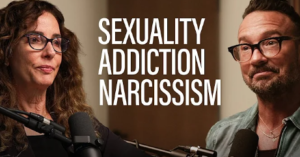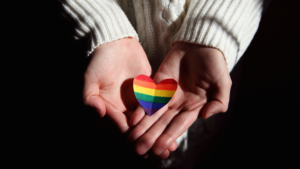Sexual anorexia and sexual aversion are terms used to describe a loss of “appetite” for romantic-sexual interaction. Imagine being married and not having sex for years. There is no sharing of intimacy, no romance, no meaningful discussions about each others’ desires. There are thousands of couples who fit this description and have sexual problems in their relationship. In order to be a diagnosis, sexual aversion must cause distress or interpersonal difficulty for the individual. It is a fear of intimacy to the point that the person has severe anxiety surrounding sex in an intimate context. Sexual anorexia is essentially sexual starvation.
Sexual anorexia symptoms include:
- Withholding love
- Withholding praise
- Controlling with silence or anger
- Withholding sex
- Unwillingness or inability to share feelings
- Staying so busy you have no time for your partner
An individual living with sexual anorexia is often terrified of sexual experiences and will go to tremendous lengths to control, limit or avoid sex altogether. For this person, sex has been targeted as the source of their pain and is to be tempered in spite of personal and relational costs. By redirecting sexual behavior, the sexual anorexic is challenged to confront their fears of intimacy to step outside their comfort zone and experience healthy relational sex. Healthy relational sex can be a powerful vehicle to personal growth, sharing feelings and increasing self-esteem. Relational sex can help to heal the hurt and abandonment the sexual anorexic experienced earlier in life. A qualified sex therapist will establish a treatment goal for sexual anorexics to achieve sexual health, set healthy boundaries and have emotional needs met in direct ways.
Case Study:
Ms. G came to treatment at age 39 because she was still a virgin. Her aversion of intimacy stemmed from childhood sexual abuse, but at this point in her life she decided it was time to seek treatment. She had an extensive phobia of sex which had led her to isolate to the point of avoiding any social situations in which men may be present. She presented herself as asexual, and put little thought or energy into her self-care. The first step in Ms. G’s therapy was to get comfortable enough with the therapist to feel safe enough to take risks and share about it. Once the client and therapist had a strong rapport, the therapist then began to encourage Ms. G to increase her self-care, including bathing regularly, mending clothes that were torn, and wearing clothing that was age appropriate and complementary. Next, with the therapist’s support, Ms. G was able to place a personal ad for herself. She was encouraged to only respond to a few letters a week, and only to letters that appealed to her. She was also instructed to limit the purpose of her response to simply getting to know the person, as opposed to arranging to meet them.
While increasing her comfort in corresponding with men, her therapist continued to address the underlying fears of physical intimacy that stemmed from her childhood abuse. Ms. G was often resistant during therapy, and her therapist patiently addressed these moments, helping Ms. G to comfortably and confidently continue to take risks. Over time Ms. G was asked out on a date by a man, and was able to have a sexual relationship with him.
References:
AMERICAN PSYCHIATRIC ASSOCIATION. (2000). Diagnostic and statistical manual of mental disorders (4th ed., text rev.). Washington, DC: Author. Rosen, R., & Leiblum, S. R. (1995). Case studies in sex therapy. New York, NY: Guilford Press.



